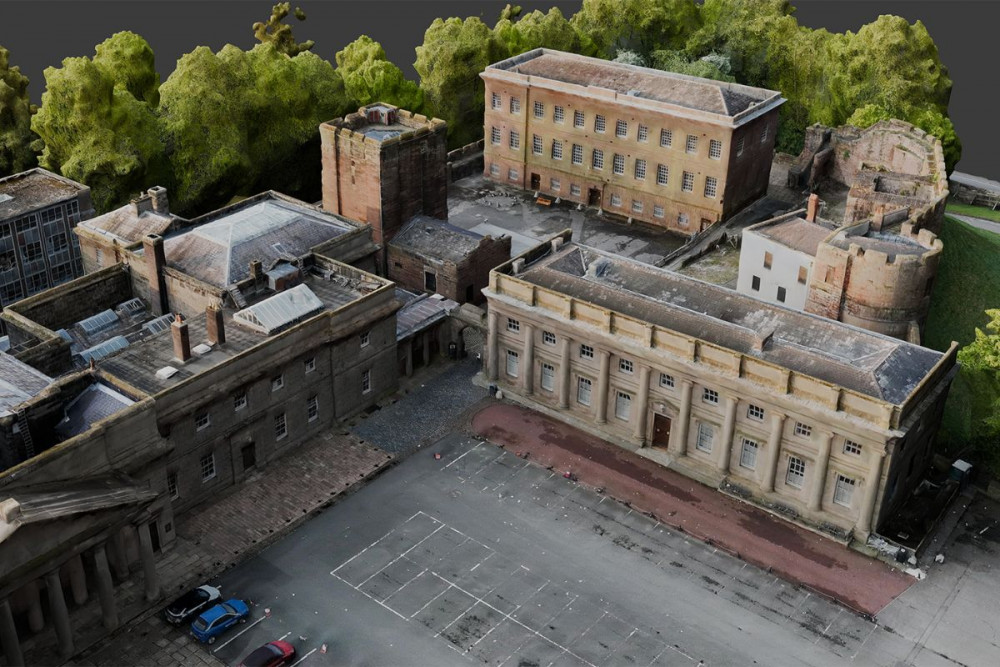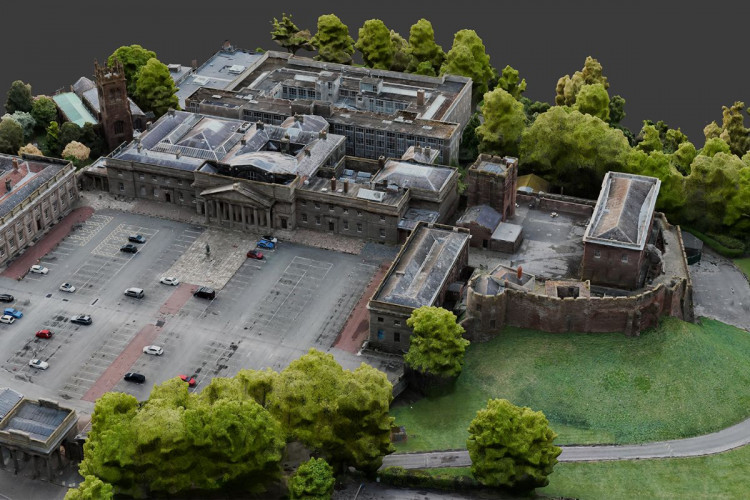Chester Castle's hidden history could be revealed in brand new project
By Dherran Titherington 24th Jun 2025
By Dherran Titherington 24th Jun 2025

The secrets of Chester Castle are being uncovered in a new project which uses advanced technology to shed new light on its origins
Led by Time Team's landscape archaeologist, Stewart Ainsworth, alongside professor Meggen Gondek and digital specialist, Alex Foster, the project could shed new light on Chester Castle's origins.
Using the latest-generation drones with light detection and ranging data (LIDAR) alongside imaging sensors, the project generates a survey of the whole castle complex.
"Chester Castle has been a centre of regional power, justice and administration for centuries, yet it remains one of the city's least understood heritage assets," Stewart explained.

"This new collaborative project will not only benefit Chester.
"It will also make it known to a much wider audience through the power of digital outreach, as well as contributing to the protection of other cultural assets."
The methods allow a detailed survey and analysis to be undertaken in a non-invasive way, thereby recording and preserving the castle complex without damaging any of the structures.
Win Scutt, curator of properties at English Heritage, said: "Chester Castle stands as a pivotal monument in medieval English history, serving as a key Norman stronghold, administrative centre for the Earldom of Chester, and a crucial military base for campaigns against Wales.

"The ongoing digital scanning and research are of immense importance.
"They allow for the creation of incredibly precise 3D models and detailed documentation, safeguarding this invaluable heritage for future generations and enabling unprecedented opportunities for conservation, study and public engagement."
Teams from Chester University, English Heritage, Historic England and Cheshire Police Rural Crime Team are at the core of this new scheme, which is inspired by pioneering work undertaken by Stewart and colleagues from the University in 2024.
At the time, they used remote-sensing techniques to investigate a medieval glassworks at Glaziers' Hollow in Delamere Forest.

Following this, Stewart was approached by Cheshire Police Rural Crime Team to see if the methods used to document the landscape could record and investigate damage or threats to heritage assets elsewhere.
Use of the drones and scanners would allow remote-sensing surveys to be carried out and generate a snapshot of what heritage assets look like at a particular point in time, making it easier to detect any unwarranted changes such as theft and/or vandalism.
PC Jonathan Lightfoot, Heritage Crime Officer and Wildlife Crime Officer for Cheshire Police Rural Crime Team, added: "This is a fantastic opportunity to see what modern technology can be used to both detect and prevent heritage crime.
"Being able to have 3D models and maps of crime scenes can really assist use with investigations.
"We have already seen what evidence can be produced from some of the tests we have done and it is really exciting."
CHECK OUT OUR Jobs Section HERE!
chester vacancies updated hourly!
Click here to see more: chester jobs
Share:











